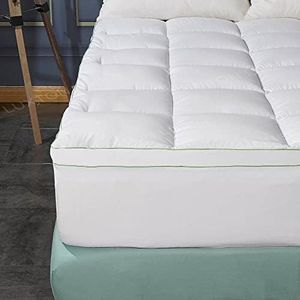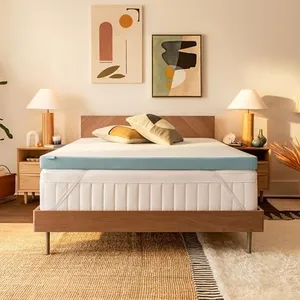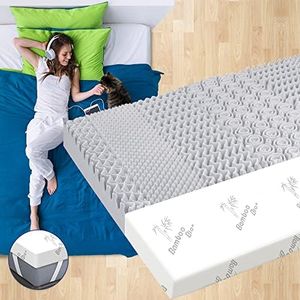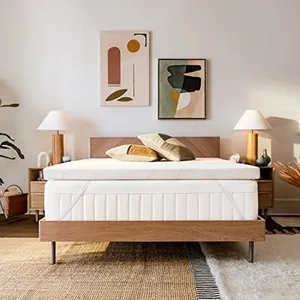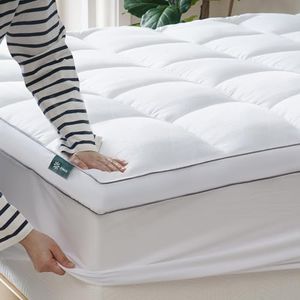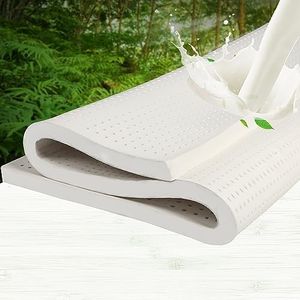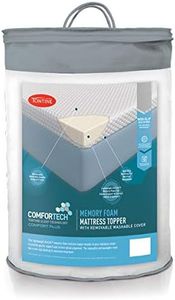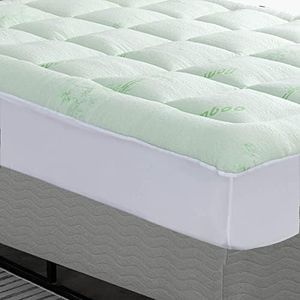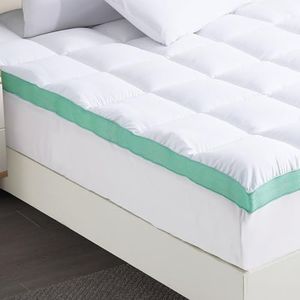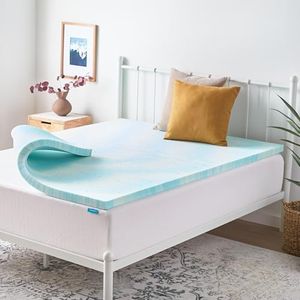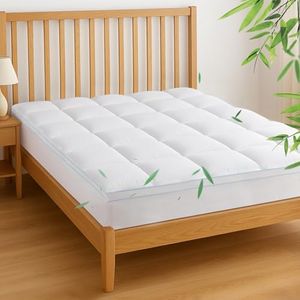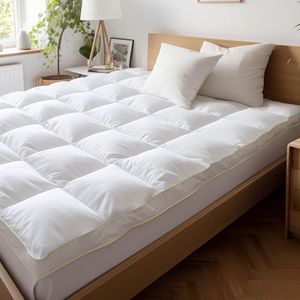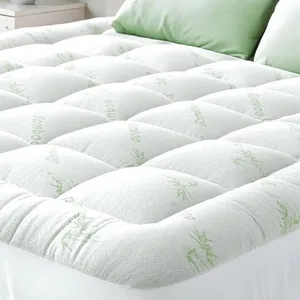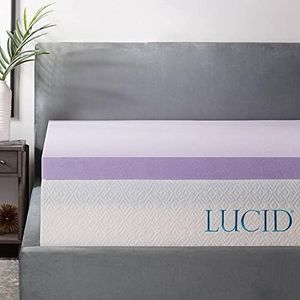We Use CookiesWe use cookies to enhance the security, performance,
functionality and for analytical and promotional activities. By continuing to browse this site you
are agreeing to our privacy policy
10 Best Bed Toppers
From leading brands and best sellers available on the web.Buying Guide for the Best Bed Toppers
Choosing the right bed topper can make a significant difference in your sleep quality and overall comfort. Bed toppers serve as an extra layer between you and your mattress, and they can adjust the firmness, support, and feel of your bed. When picking a topper, it's important to consider what you want to improve—do you need more cushioning, extra support, or perhaps temperature regulation? Think about your sleep position and whether you have any back or joint pain, as these will help guide your decision. Understanding the key specifications of bed toppers will help you find the one that's a perfect fit for your specific needs and sleeping habits.MaterialMaterial refers to what the topper is made of, and it's foundational to how it will feel and perform. Common materials include memory foam, latex, feather/down, and polyester fiberfill. Memory foam toppers conform to your body and can relieve pressure points, making them great for side sleepers or those seeking pain relief. Latex is durable, supportive, and naturally resistant to dust mites and allergens, making it a good choice for those needing both support and hypoallergenic properties. Feather and down toppers are soft and plush, adding a cloud-like comfort, though they might lack structured support. Polyester fiberfill toppers are budget-friendly and light, often offering a moderate level of softness. Consider your preferences for support, sensitivity to allergies, and how much you want your topper to change the feel of your mattress when choosing material.
ThicknessThickness indicates how deep or plush the topper is, usually measured in inches. Thinner toppers (about 1-2 inches) add a subtle layer of softness and are good if your mattress just needs a little boost. Medium thickness (2-3 inches) is a popular choice, offering a balance of comfort and support for most sleepers. Thicker toppers (above 3 inches) provide a more dramatic change, suitable if your mattress is very firm or if you need more pressure relief for conditions like arthritis. Match the thickness to your needs: pick thinner if you want a slight adjustment, go medium for general comfort improvement, or thicker for major enhancements or if your mattress feels uncomfortable.
FirmnessFirmness describes how soft or hard the topper feels when you lie on it. Soft toppers offer a plush, enveloping feeling and are suitable for people who like sinking in a bit, often preferred by side sleepers. Medium-firm toppers give balanced support and suit a wide range of sleeping positions. Firm toppers are more supportive and ideal if you sleep on your back or stomach, or if you need extra support for your spine. To decide on firmness, think about how you sleep, your body weight, and if you have any specific comfort or support needs. Your topper should complement your mattress while meeting your preferences for softness or support.
Temperature RegulationTemperature regulation refers to how well the topper helps you stay cool or warm at night. Some materials, such as memory foam, can trap heat, but many models include cooling gel or ventilation features. Latex and natural fillings often sleep cooler because they allow better airflow. Feather and down toppers are lightweight and breathable, but may not be ideal for those who sleep very hot. If you tend to overheat or sweat during sleep, look for toppers that advertise cooling features or are made from naturally breathable materials. If you get cold easily, a basic memory foam or down topper can add cozy warmth.
Allergy ResistanceAllergy resistance means the topper's ability to prevent dust mites, mold, and other allergens from building up. Materials like latex and specially treated memory foam are often resistant to common allergens, making them suitable for people with allergies or asthma. Down alternatives are sometimes hypoallergenic as well. If allergies are a concern for you, check for certifications or materials that promise hypoallergenic properties, and avoid natural feather or down unless specifically treated for allergy resistance.
Care and MaintenanceCare and maintenance covers how easy it is to clean and keep your topper in good condition. Some toppers come with removable, machine-washable covers, which is helpful for keeping things fresh, especially if you have allergies or pets. Others may need spot cleaning or professional care. Consider how much effort you're willing to put into keeping your topper clean and choose one that fits your lifestyle—if you want low maintenance, look for washable covers or low-allergen materials that resist dust and stains.
